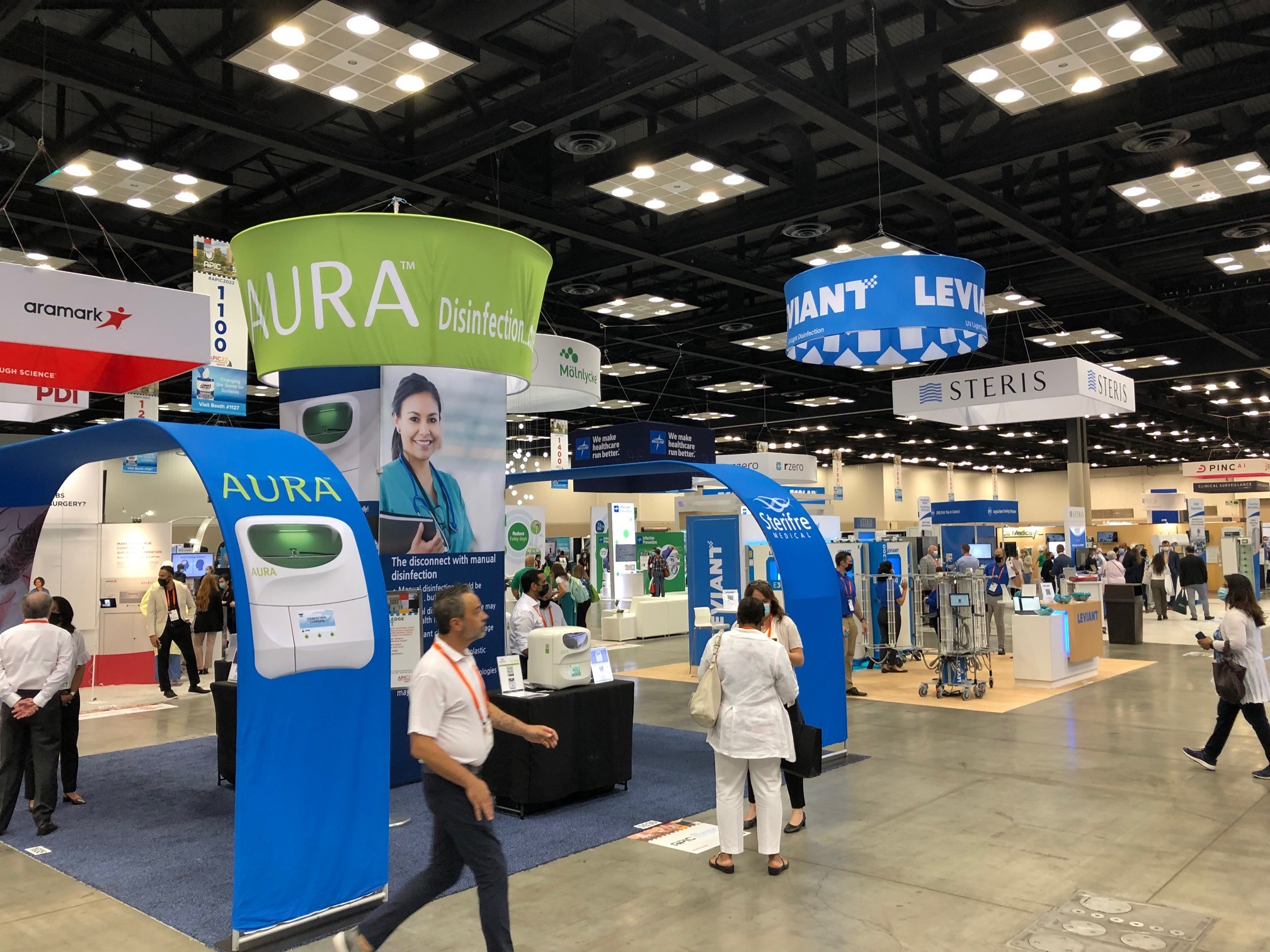
The first in-person conference in three years held by the Association for Professionals in Infection Control and Epidemiology (APIC ) opened in Indianapolis June 13, striking notes of both professional pride and personal exhaustion.
After all, the last two years have seen the infection prevention community challenged like never before, thanks to the COVID-19 pandemic. The novel coronavirus was a recurring theme on Day 1 of APIC’s annual conference, as were changing infection prevention practices and the need to diversify the kinds of academic credentials and professional backgrounds that comprise the IP talent pool.
Day 1 sessions also explored the implications of the recently released and highly anticipated update to standards for reprocessing flexible endoscopes, as well as moving medical instrument sterilization offsite.
“Our work is stabilizing a reeling world,” said APIC President Linda Dickey during a morning keynote that featured remarks from APIC leadership as well as a talk by retired Air Force Col. DeDe Halfhill on leadership and the choices effective leaders make daily to connect with their teams and inspire them.
“The last few years have been rife with challenges and they’re not going away,” said Halfill, featured in the leadership tome Dare to Lead. “We have all carried a lot for the last two years. You more than most have carried a lot for the last two years.”
APIC organizers said 1,300 attendees trekked to the Hoosier State’s capital city for the in-person conference while another 1,800 were opting to take in the sessions and continuing education courses online. Unlike other recent healthcare tradeshows, APIC has a strict masking policy – and near-total compliance, natch.
APIC is celebrating its 50th anniversary this year and speakers noted how far the field of infection prevention has come – at one time hospital infections were seen as a revenue source, because they lengthened hospital stays. Today, hospital-acquired infections (or healthcare-associated infections, both known by the HAI shorthand) are rightly seen as an existential threat to U.S. healthcare.
On any given day, according to the U.S. Centers for Disease Control and Prevention, one in 31 hospital patients has at least one healthcare-associated infection, exposing patient safety cracks and driving up the cost of care.
In 2020, COVID-19 stamped out years of steady decline in HAIs, spurring significant increases in four of six routinely tracked infections, according to a CDC analysis. One infection-prevention tool to emerge during the pandemic: single-use endoscopes. In June 2021, the U.S. Food and Drug Administration, for the first time, recommended that healthcare providers consider single-use bronchoscopes when there is increased risk of spreading infection and when treating COVID-19 patients.
In her keynote remarks, Dickey called attention to a new research paper published in the American Journal of Infection Control, “Recommendations for change in infection control practices and programs.” In it, author Robert Garcia and co-authors assess the many infection prevention challenges faced in current healthcare settings and offer 14 new strategies to reduce infection risk and control both known and emerging pathogens.
“Fifty years of IP evolution has brought us to a crossroads in which we face increasingly diverse and complex issues,” the authors write.
Improving infection prevention programs, standardizing metrics, and better controlling potential HAI events must be accomplished “with the understanding of the importance of a structure for infection prevention nationally that spans across the continuum of care from acute to skilled nursing to ambulatory to postacute settings and which is resilient to mammoth events such as pandemics,” they add.
Physicians, researchers, epidemiologists, educators, administrators, and medical technologists from across the globe are attending APIC 2022, which runs through June 15.
Founded in 1972, APIC counts more than 15,000 members advancing the science and practice of infection prevention and control through research, advocacy, and patient safety; education, credentialing, and certification; and fostering development of the infection prevention and control workforce of the future.


